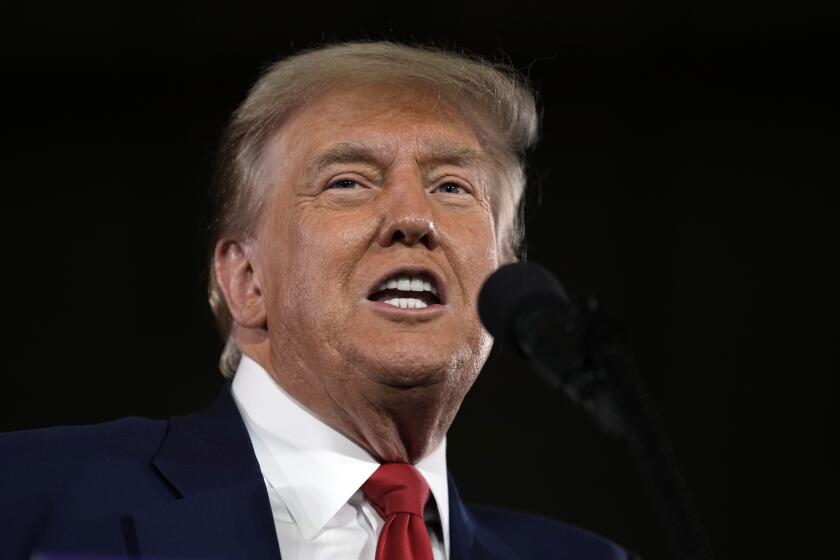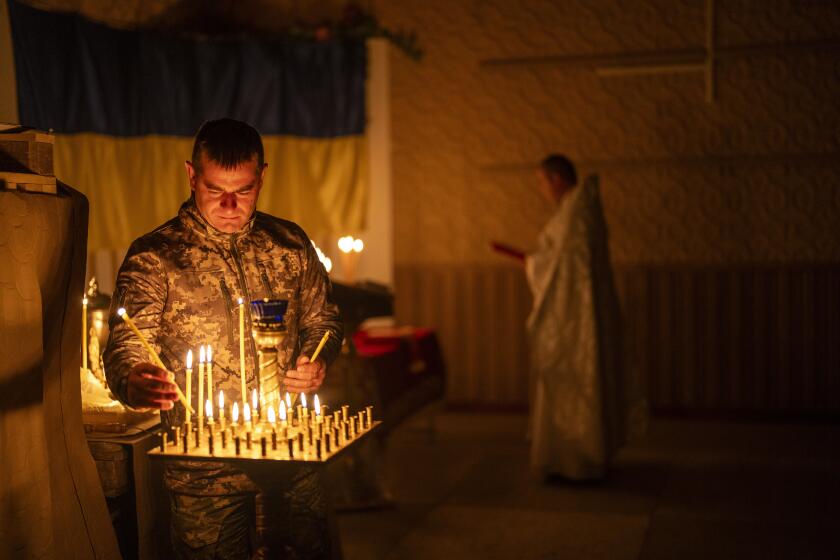Kidnap-Slaying Sparks Rioting
For a month, the case of 17-year-old Diego Peralta moved the residents of this city, becoming the most visible symbol of the crime wave gripping recession-ravaged Argentina.
Diego was kidnapped while headed to school July 5 and held by a band of criminals who demanded $200,000 in ransom. His fate became a cause celebre. Even President Eduardo Duhalde worked to win his release.
Late Monday, Diego’s body was found in an artificial pond, still in his blue-and-white school uniform, his throat slashed. Hours later, friends and neighbors attacked the people they believed had kidnapped and killed the teen: officers of the notoriously corrupt Buenos Aires provincial police, who had to flee as the mob took over and then set fire to their station.
“Justice no, death penalty yes!” the rioters chanted as they surrounded the station in El Jaguel, a suburban community.
By early Tuesday, the rioting had spread through the surrounding neighborhood, with local businesses looted and half a dozen police officers injured. After a few hours, and the arrest of a handful of residents, order was restored.
The discovery of the body--a horrific scene replayed repeatedly on television--sparked widespread calls Tuesday for an investigation into police corruption and tougher measures against crime.
Former Army Col. Aldo Rico, now mayor of suburban San Miguel in Buenos Aires province, said the case shows that the provincial police force has descended into “a state of near anarchy.” Former President Carlos Menem said Argentina should consider adopting the death penalty.
But Juan Pablo Cafiero, the security chief of Buenos Aires province, said there was as yet no evidence of police participation in the crime. Cafiero’s deputy, Marcelo Sain, suggested that the kidnapping and killing were part of a political plot.
The governor of the province, Felipe Sola, is a member of the Peronist party, and the case has proved a major embarrassment ahead of the party’s presidential primary.
Suspicion fell upon the provincial police soon after Diego was abducted from the taxi he was taking to school.
One of the first officers who came to the Peralta household to investigate was later arrested and charged with an unrelated robbery of a local business.
And two officers in the community’s newly created anti-kidnapping unit--which also participated in the investigation of Diego’s abduction--were later arrested and charged with kidnapping a local youth.
Two weeks after Diego disappeared, his parents had gathered only $2,000 in U.S. currency and 9,000 pesos--about $2,500--toward meeting the kidnappers’ demands. The family, which runs a small business distributing soft drinks, raised the money from friends and relatives. Following instructions from the kidnappers, Diego’s father dropped off the money at a remote bridge.
When Diego was still not released, Buenos Aires witnessed a protest that echoed the demonstrations held during the “dirty war” of the 1970s and ‘80s: hundreds of people marching to demand the freedom of a kidnap victim.
“We thought they [the kidnappers] would give him back to me alive, but instead they gave him back to me in a ditch,” said Emilse Peralta, Diego’s mother.
Relatives told reporters here that the family had for years been the target of harassment by police officers, who would ask for bribes as Diego and his father drove through the neighborhood selling soft drinks.
According to an account in the Buenos Aires daily newspaper Pagina 12, frustration with the police boiled over late Monday, hours after the discovery of Diego’s body.
A group of neighborhood residents at first gathered at the Peralta home to console the parents and family. Then, from inside the home, a woman’s voice could be heard shouting, “We don’t want any more corrupt police!”
A large group of women outside picked up the chant. Then a group of young men joined them, and both groups marched toward the police station.
“All of you have to die!” a woman shouted at the officers as she threw a rock at the station. The young men turned over and set fire to a car parked outside, then charged into the building, setting fire to a desk and smashing computers as a television crew filmed them.
One of the few prisoners inside the station’s holding cells was treated for smoke inhalation. Like most of the other prisoners, he was a former policeman.
More to Read
Start your day right
Sign up for Essential California for news, features and recommendations from the L.A. Times and beyond in your inbox six days a week.
You may occasionally receive promotional content from the Los Angeles Times.







